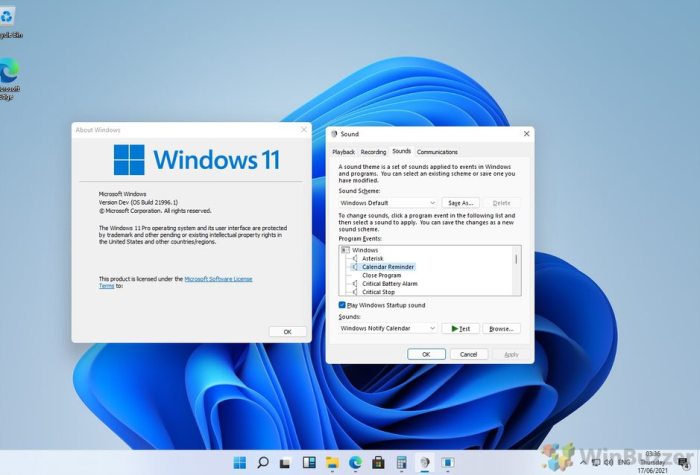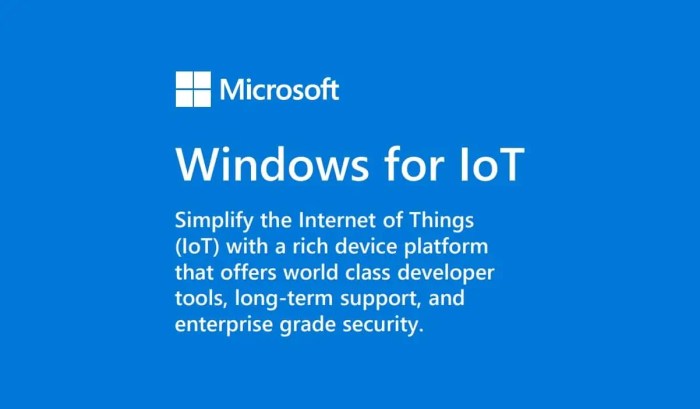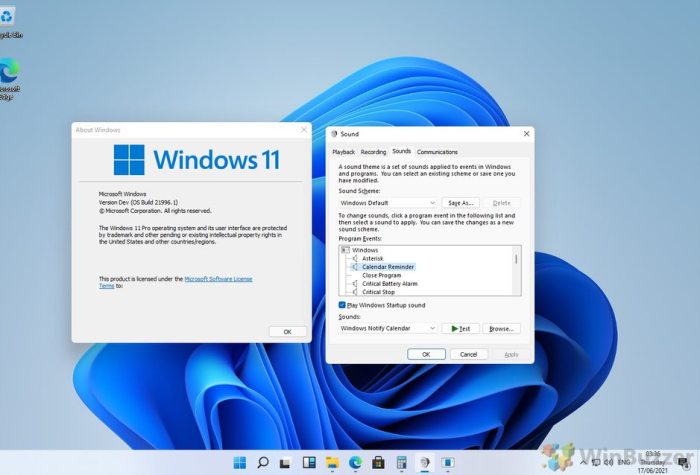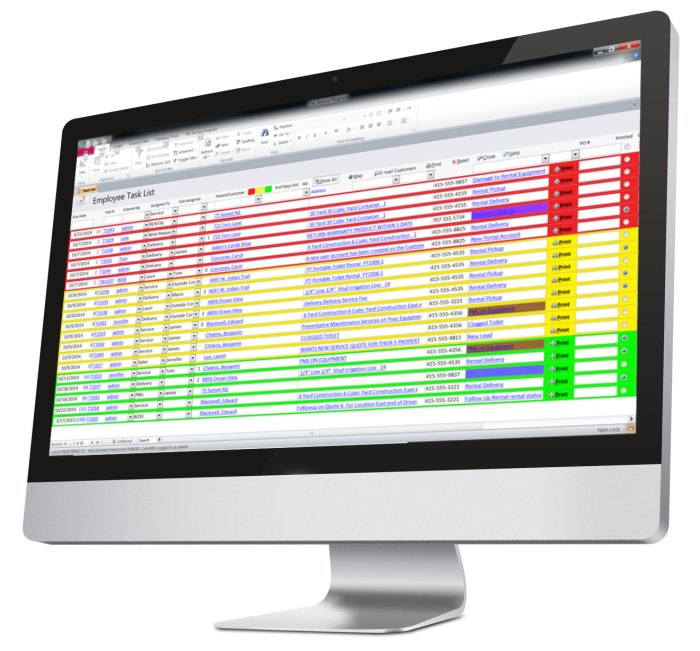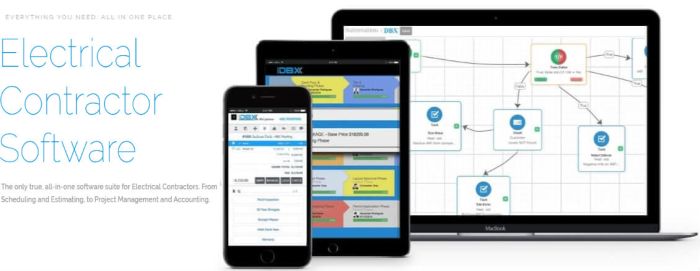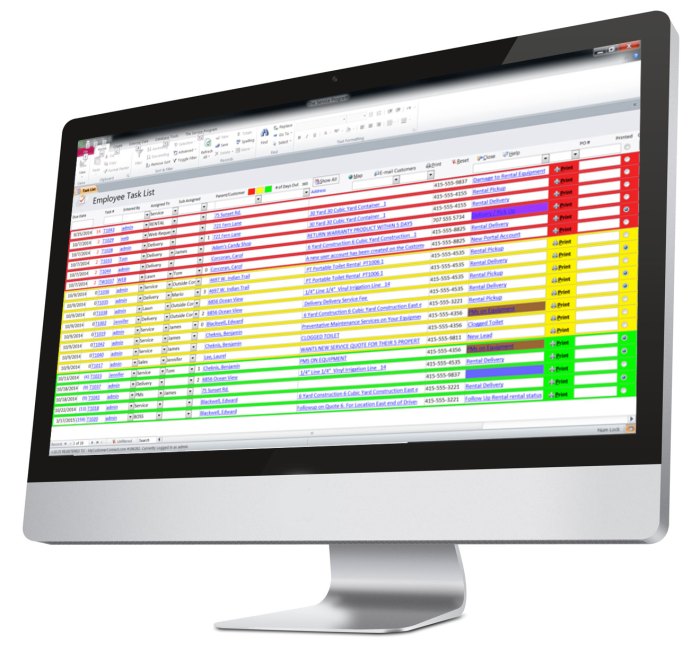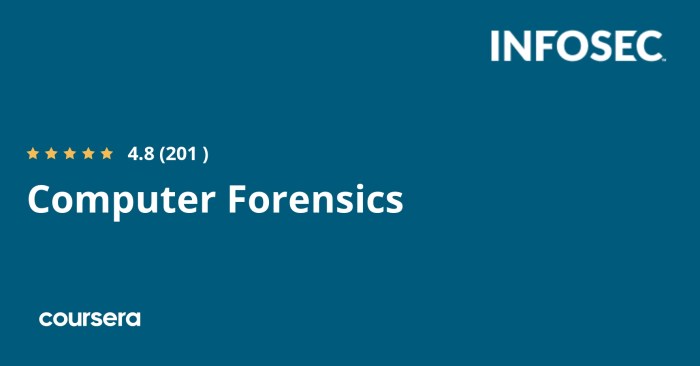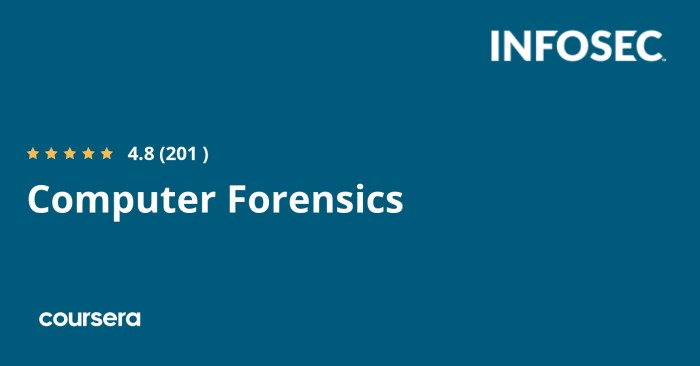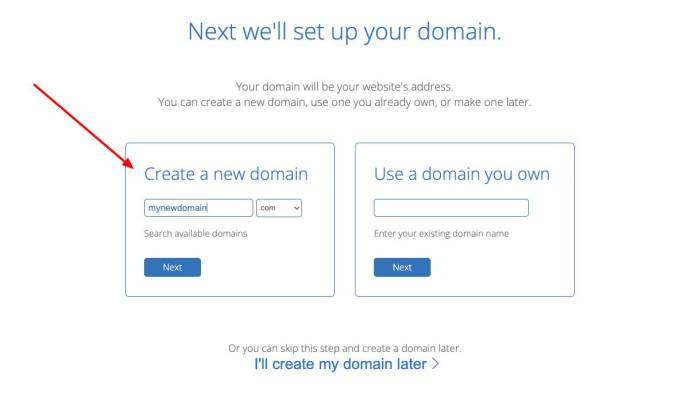IT Software Outsourcing Company has emerged as a game-changer for businesses seeking to streamline operations, enhance efficiency, and access specialized expertise. This approach involves entrusting the development and maintenance of software applications to external providers, allowing companies to focus on their core competencies.
From small startups to large enterprises, outsourcing has become an increasingly popular strategy, unlocking a wealth of benefits and driving innovation.
The decision to outsource software development is driven by a range of factors, including cost savings, access to a global talent pool, and the ability to scale operations quickly. Businesses can leverage the expertise of specialized outsourcing companies to develop cutting-edge applications, enhance their digital presence, and gain a competitive edge in the ever-evolving technological landscape.
What is IT Software Outsourcing?

IT software outsourcing is a strategic business practice where companies delegate the development, maintenance, or support of their software applications to external providers. This approach allows businesses to leverage specialized expertise, reduce costs, and enhance efficiency.
Core Principles of IT Software Outsourcing
The core principles of IT software outsourcing are based on the concept of shared responsibility and collaboration. Key principles include:
- Clearly Defined Scope and Objectives:A comprehensive agreement outlining the specific tasks, deliverables, and timelines is essential.
- Effective Communication and Collaboration:Continuous communication channels ensure smooth project execution and address any potential challenges.
- Quality Assurance and Performance Monitoring:Regular performance reviews and quality checks guarantee the delivery of high-quality software solutions.
- Data Security and Confidentiality:Robust security measures are crucial to protect sensitive data and intellectual property.
Outsourcing Models
Outsourcing models vary depending on the location of the outsourcing provider and the nature of the project. Common models include:
- Onshore Outsourcing:Engaging a provider within the same country as the client. This model offers close proximity and cultural familiarity but may not always provide cost advantages.
- Offshore Outsourcing:Engaging a provider in a distant country, often with significant cost savings but potentially facing communication and cultural differences.
- Nearshore Outsourcing:Engaging a provider in a neighboring country, offering a balance between cost savings and cultural proximity.
Benefits of IT Software Outsourcing
IT software outsourcing offers numerous benefits, including:
- Cost Reduction:Outsourcing can significantly reduce operational costs by leveraging lower labor costs in other countries. For example, companies in developed nations often outsource software development to countries with lower wages, like India or the Philippines, to achieve cost savings.
- Access to Expertise:Outsourcing allows companies to access specialized skills and expertise that may not be available internally. For instance, a company developing a complex mobile application may outsource development to a specialized mobile app development firm.
- Increased Efficiency:Outsourcing can free up internal resources to focus on core business activities. By delegating software development or maintenance to external providers, companies can streamline their operations and enhance overall efficiency.
- Flexibility and Scalability:Outsourcing provides flexibility in scaling resources up or down based on project requirements. Companies can easily adjust their IT workforce by adding or removing external resources as needed, allowing for greater agility in responding to changing market demands.
Challenges of IT Software Outsourcing
While outsourcing offers significant benefits, it also presents several challenges:
- Communication Barriers:Language differences, cultural nuances, and time zone variations can create communication hurdles. For example, a company in the US outsourcing software development to a provider in India may encounter communication challenges due to time zone differences and language barriers.
- Data Security Concerns:Outsourcing sensitive data to external providers raises concerns about data security and confidentiality. It is crucial to select providers with robust security measures and a proven track record of data protection.
- Quality Control Issues:Maintaining quality control over outsourced projects can be challenging. It is essential to establish clear quality standards, conduct regular reviews, and implement appropriate quality assurance processes.
- Loss of Control:Outsourcing can lead to a perceived loss of control over the development process. It is important to establish clear communication channels, define roles and responsibilities, and maintain regular oversight to mitigate this challenge.
Why Choose an IT Software Outsourcing Company?

In today’s competitive business landscape, companies are constantly seeking ways to optimize their operations and gain a competitive edge. IT software outsourcing has emerged as a strategic solution for businesses of all sizes, enabling them to leverage external expertise and resources to enhance their technology capabilities.
Outsourcing offers numerous benefits, from cost savings to access to specialized skills, making it an attractive option for businesses looking to streamline their development processes and achieve their technology goals.
Cost-Effectiveness of IT Software Outsourcing
Outsourcing your IT software development can be significantly more cost-effective than building an in-house team. This is due to several factors, including:
- Lower Labor Costs:Outsourcing to countries with lower labor costs can significantly reduce development expenses. For example, outsourcing to India or the Philippines can result in cost savings of up to 50% compared to hiring developers in the United States or Europe.
- Reduced Overhead Costs:Businesses can avoid the overhead costs associated with hiring and managing an in-house team, such as salaries, benefits, office space, and equipment.
- Flexible Staffing:Outsourcing allows businesses to scale their development team up or down as needed, eliminating the need to hire and train permanent employees for projects with fluctuating requirements.
The cost savings realized through outsourcing can be reinvested in other areas of the business, such as marketing, product development, or research and development, contributing to overall business growth.
Access to Specialized Skills and Expertise
One of the key advantages of IT software outsourcing is the access to a global pool of highly skilled and specialized developers. Outsourcing companies have a wide range of expertise in various technologies and domains, enabling businesses to tap into specialized skills that may not be readily available in-house.
This access to specialized skills can be particularly beneficial for businesses that are developing complex software applications or require expertise in niche technologies.
Focus on Core Business Operations, IT Software Outsourcing Company
By outsourcing IT software development, businesses can free up their internal resources to focus on their core business operations. This allows companies to concentrate on their strengths and areas where they can create the most value, rather than diverting resources to IT development.
Outsourcing can also help businesses streamline their processes and improve their overall efficiency, leading to increased productivity and profitability.
Faster Time to Market
Outsourcing can significantly reduce the time it takes to develop and launch new software applications. Outsourcing companies have established development processes and experienced teams, enabling them to deliver projects quickly and efficiently. This faster time to market can give businesses a competitive advantage, allowing them to capitalize on emerging trends and market opportunities before their competitors.
Key Considerations for Choosing an IT Software Outsourcing Company
Choosing the right IT software outsourcing company is crucial for the success of your project. It’s not just about finding a company that can write code; it’s about finding a partner that understands your business needs, has the technical expertise to execute your vision, and can effectively collaborate with your team.
Evaluating Technical Expertise
Evaluating the technical expertise of potential outsourcing partners is critical. You need to ensure they have the necessary skills and experience to deliver high-quality software solutions. Here’s a checklist of factors to consider:
- Programming Languages and Frameworks:Assess the company’s proficiency in the programming languages and frameworks relevant to your project. For example, if you’re developing a web application, they should be experienced in languages like Python, Java, or JavaScript and frameworks like React, Angular, or Django.
- Software Development Methodologies:Evaluate their understanding and experience with different software development methodologies, such as Agile, Waterfall, or Scrum. Choose a company that aligns with your preferred methodology.
- Technical Certifications and Accreditations:Look for certifications and accreditations that demonstrate their technical expertise. For example, a company certified in AWS or Azure indicates their proficiency in cloud computing.
- Previous Projects and Case Studies:Review their portfolio of previous projects and case studies to understand their capabilities and experience in similar projects. Look for projects that align with your specific requirements and industry.
Assessing Industry Experience
While technical expertise is important, industry experience is equally crucial. A company with experience in your specific industry understands the challenges and complexities involved in developing software solutions.
- Domain Expertise:Look for companies with experience in your industry, such as healthcare, finance, or retail. This experience will help them understand your business needs, regulatory requirements, and industry best practices.
- Industry-Specific Solutions:A company with industry experience can offer tailored solutions that address your specific business challenges. For example, a healthcare software outsourcing company may have experience developing electronic health records (EHR) systems or patient portals.
- Understanding of Market Trends:Industry experience provides valuable insights into market trends and emerging technologies that can be incorporated into your software solutions. This can give you a competitive edge.
Evaluating Communication Skills
Effective communication is essential for a successful outsourcing partnership. You need to be able to communicate your requirements clearly and receive regular updates on the project’s progress.
- Language Proficiency:Ensure the company has strong language proficiency in your native language or the language of your project. This facilitates clear communication and reduces misunderstandings.
- Communication Channels:Assess the company’s communication channels, such as email, instant messaging, video conferencing, and project management tools. Choose a company that uses communication methods that are convenient and efficient for your team.
- Responsiveness and Availability:Evaluate the company’s responsiveness to your inquiries and their availability for meetings and discussions. You need a partner that is readily available to address your concerns and provide timely updates.
- Project Management Practices:Look for companies with established project management practices, including regular status reports, progress tracking, and clear communication of milestones. This ensures transparency and accountability throughout the project.
Cultural Compatibility and Time Zone Differences
Cultural compatibility and time zone differences can impact the effectiveness of an outsourcing partnership. It’s important to consider these factors when selecting a company.
- Cultural Understanding:Research the company’s culture and values to ensure they align with your company culture. Cultural differences can impact communication, work ethics, and project management styles.
- Time Zone Considerations:Evaluate the time zone difference between your location and the outsourcing company’s location. Significant time zone differences can make communication and collaboration challenging.
- Overlapping Work Hours:Look for companies with overlapping work hours to ensure seamless communication and collaboration. This allows for real-time updates and efficient problem-solving.
Services Offered by IT Software Outsourcing Companies

IT software outsourcing companies offer a wide range of services to businesses of all sizes, encompassing various aspects of software development and technology management. These services are tailored to meet the specific needs and goals of each client, helping them optimize their IT operations and achieve business objectives.
Web Development
Web development services are crucial for establishing a strong online presence and engaging with customers effectively. Outsourcing companies offer comprehensive web development solutions, including:
- Website Design and Development:Outsourcing companies employ skilled web designers and developers to create visually appealing, user-friendly websites that align with client branding and target audience preferences. They leverage various technologies, including HTML, CSS, JavaScript, and frameworks like React, Angular, and Vue.js, to build responsive websites that adapt seamlessly across different devices.
- E-commerce Development:For businesses seeking to sell products or services online, outsourcing companies can develop robust e-commerce platforms. They integrate payment gateways, shopping carts, inventory management systems, and other essential features to facilitate secure and efficient online transactions. Popular e-commerce platforms include Shopify, Magento, and WooCommerce.
- Content Management Systems (CMS):Outsourcing companies can implement and customize content management systems like WordPress, Drupal, and Joomla, empowering clients to easily manage website content, including text, images, and multimedia. This enables clients to update their websites independently, reducing reliance on external developers.
Mobile App Development
Mobile applications have become indispensable for businesses seeking to reach a wider audience and enhance customer engagement. Outsourcing companies offer expertise in developing native and cross-platform mobile apps for iOS and Android devices.
- Native App Development:Native apps are specifically designed for a particular operating system, leveraging platform-specific features and APIs for optimal performance. Outsourcing companies employ developers skilled in Swift (iOS) and Kotlin (Android) to build high-quality native apps that deliver a seamless user experience.
- Cross-Platform App Development:Cross-platform apps are developed using frameworks like React Native, Flutter, and Xamarin, allowing them to run on both iOS and Android devices with a single codebase. This approach reduces development time and costs while ensuring consistency across platforms.
- Mobile App Design and UI/UX:Outsourcing companies prioritize user experience by designing intuitive and visually appealing mobile app interfaces. They employ user interface (UI) and user experience (UX) designers to create engaging and user-friendly apps that meet specific user needs.
Cloud Computing
Cloud computing offers businesses scalable and cost-effective IT solutions, enabling them to access resources on demand. Outsourcing companies provide comprehensive cloud services, including:
- Cloud Infrastructure Management:Outsourcing companies manage and maintain cloud infrastructure, including servers, storage, networking, and security, ensuring high availability and performance. They leverage cloud platforms like AWS, Azure, and Google Cloud to provide clients with flexible and scalable solutions.
- Cloud Migration:Outsourcing companies assist businesses in migrating their applications and data to the cloud, optimizing their IT infrastructure and reducing operational costs. They leverage their expertise in cloud migration tools and methodologies to ensure a smooth and seamless transition.
- Cloud Security:Security is paramount in the cloud, and outsourcing companies implement robust security measures to protect client data and applications. They employ security professionals with expertise in cloud security best practices, including access control, encryption, and threat monitoring.
Software Development and Maintenance
Outsourcing companies offer comprehensive software development services, encompassing various stages of the software development lifecycle, from initial planning to deployment and ongoing maintenance.
- Custom Software Development:Outsourcing companies specialize in developing custom software applications tailored to specific business needs. They employ experienced software engineers and architects to design, develop, and implement solutions that address unique requirements.
- Software Testing and Quality Assurance (QA):Outsourcing companies conduct thorough software testing to ensure quality and functionality. They employ skilled QA engineers to perform various types of testing, including functional, performance, and security testing, to identify and resolve defects before deployment.
- Software Maintenance and Support:Outsourcing companies provide ongoing software maintenance and support, ensuring applications remain stable and up-to-date. They offer bug fixes, performance optimization, security updates, and technical support to keep software running smoothly.
Data Analytics and Business Intelligence
Data analytics is crucial for extracting valuable insights from data, enabling businesses to make informed decisions. Outsourcing companies provide data analytics services, including:
- Data Collection and Integration:Outsourcing companies collect and integrate data from various sources, including databases, APIs, and web scraping, to create a unified data repository for analysis.
- Data Analysis and Reporting:Outsourcing companies analyze data using statistical methods, machine learning algorithms, and business intelligence tools to identify trends, patterns, and insights. They generate comprehensive reports and dashboards to present findings effectively.
- Data Visualization:Outsourcing companies create interactive dashboards and visualizations to present data in a clear and engaging manner. They utilize data visualization tools like Tableau, Power BI, and Qlik Sense to enable clients to understand complex data patterns easily.
Other Services
In addition to the core services mentioned above, outsourcing companies offer a range of other services to support business operations, including:
- IT Consulting:Outsourcing companies provide IT consulting services to help businesses assess their technology needs, develop IT strategies, and implement solutions that align with their business goals.
- IT Infrastructure Management:Outsourcing companies manage and maintain IT infrastructure, including hardware, software, and networking, ensuring smooth operations and minimizing downtime.
- Cybersecurity:Outsourcing companies provide cybersecurity services to protect businesses from cyber threats, including data breaches, malware attacks, and phishing scams. They implement security measures, conduct vulnerability assessments, and provide incident response services.
The Outsourcing Process
Successfully outsourcing IT software development requires a well-defined process that ensures seamless collaboration and a successful outcome. This process involves a series of steps, starting from the initial engagement and culminating in the delivery of the final product.
Understanding the Outsourcing Process
The outsourcing process is a systematic approach that involves various stages, from initial planning to project completion. It’s crucial to have a clear understanding of each stage and its importance in ensuring a successful outcome.
- Requirement Gathering and Analysis:The process begins with a comprehensive understanding of the client’s requirements. This involves detailed discussions, documentation, and analysis to define the project scope, objectives, functionalities, and desired outcomes.
- Proposal and Contract Negotiation:Based on the gathered requirements, the outsourcing company develops a proposal outlining the project scope, timeline, budget, and deliverables. This proposal is then negotiated with the client to finalize the terms and conditions, leading to the signing of a formal contract.
- Team Formation and Project Kick-off:Once the contract is signed, the outsourcing company assembles a dedicated team of skilled professionals with the necessary expertise to handle the project. A project kick-off meeting is conducted to formally introduce the team, review the project scope, and establish clear communication channels.
- Development and Testing:This is the core stage where the actual software development takes place. The team follows agile methodologies, breaking down the project into smaller iterations, developing and testing each iteration to ensure quality and meet client expectations. Regular progress reports and updates are provided to the client.
- Deployment and Maintenance:Once the software is developed and thoroughly tested, it is deployed to the client’s environment. This may involve various steps, such as configuration, integration, and training. The outsourcing company also provides ongoing maintenance and support to address any issues or enhancements that may arise.You also can investigate more thoroughly about Digital Transformation with Business Intelligence Systems to enhance your awareness in the field of Digital Transformation with Business Intelligence Systems.
Communication, Project Management, and Quality Assurance
Effective communication, robust project management, and stringent quality assurance are essential pillars of a successful outsourcing process.
- Clear Communication:Regular and transparent communication is crucial throughout the outsourcing process. This involves frequent meetings, progress reports, and open channels for addressing queries and concerns. Clear communication ensures alignment between the client and the outsourcing company, preventing misunderstandings and delays.
- Project Management:A well-defined project management framework is essential to ensure timely delivery, adherence to budget, and meeting client expectations. This involves using proven project management methodologies, tracking progress, identifying potential risks, and implementing mitigation strategies.
- Quality Assurance:Quality assurance plays a critical role in delivering high-quality software solutions. This involves rigorous testing at each stage of development, ensuring the software meets functional and non-functional requirements, and adhering to industry best practices and standards.
Contracts, SLAs, and Intellectual Property Protection
Formal agreements, service level agreements, and intellectual property protection are crucial aspects of outsourcing agreements.
- Contracts:A comprehensive contract Artikels the scope of work, deliverables, timelines, payment terms, and responsibilities of both parties. It serves as a legal framework for the outsourcing relationship, ensuring clarity and accountability.
- Service Level Agreements (SLAs):SLAs define specific performance metrics, such as response time, uptime, and availability, that the outsourcing company commits to meeting. These agreements ensure the quality of service and provide a framework for resolving any performance issues.
- Intellectual Property Protection:Protecting intellectual property is paramount in outsourcing agreements. This involves clearly defining ownership rights, confidentiality clauses, and non-disclosure agreements to safeguard sensitive information and ensure compliance with data privacy regulations.
Trends Shaping the Future of IT Software Outsourcing: IT Software Outsourcing Company
The IT software outsourcing industry is constantly evolving, driven by technological advancements, changing business needs, and global economic factors. Understanding these trends is crucial for both outsourcing companies and businesses seeking outsourcing solutions.
Automation and Artificial Intelligence
Automation and artificial intelligence (AI) are transforming the IT software outsourcing landscape, leading to increased efficiency, cost savings, and improved service quality.
- Robotic Process Automation (RPA):RPA tools can automate repetitive tasks, such as data entry, report generation, and customer service interactions, freeing up human resources for more complex and strategic work. For example, an outsourcing company can use RPA to automate the process of generating invoices, ensuring accuracy and reducing manual effort.
- AI-powered Development Tools:AI-powered tools are being used to automate coding tasks, identify potential bugs, and optimize software performance. These tools can help outsourcing companies deliver projects faster and with fewer errors. For instance, AI-powered code completion tools can suggest code snippets, reducing development time and improving code quality.
- AI-driven Testing and Quality Assurance:AI algorithms can automate testing processes, identify potential defects, and ensure software quality. This can significantly reduce testing time and costs for outsourcing companies. For example, AI-powered test automation tools can run thousands of test cases in parallel, providing faster and more comprehensive testing results.
Agile Methodologies
Agile methodologies are becoming increasingly popular in the IT software outsourcing industry, enabling faster delivery, improved collaboration, and greater flexibility.
- Scrum and Kanban:Agile frameworks like Scrum and Kanban promote iterative development, frequent feedback, and continuous improvement. These methodologies allow outsourcing companies to adapt to changing requirements and deliver value quickly. For example, an outsourcing company using Scrum can deliver working software in short sprints, allowing clients to provide feedback and make adjustments along the way.
- Remote Collaboration Tools:Agile methodologies rely heavily on effective communication and collaboration. The rise of remote work has led to the adoption of tools like video conferencing, project management software, and instant messaging platforms, enabling seamless collaboration between outsourcing teams and clients. For example, an outsourcing company can use a project management tool to track progress, share updates, and facilitate communication between team members and clients.
Globalization and Remote Work
Globalization and the rise of remote work have significantly impacted the IT software outsourcing landscape, expanding the pool of talent and offering cost advantages.
- Global Talent Pools:Outsourcing companies can now access a global pool of skilled IT professionals, allowing them to find the best talent for specific projects. For example, an outsourcing company can hire developers from India or Eastern Europe to take advantage of their expertise and cost-effectiveness.
- Remote Work Opportunities:Remote work has become increasingly prevalent, enabling outsourcing companies to hire talent from anywhere in the world. This has led to increased flexibility and cost savings for both outsourcing companies and clients. For example, an outsourcing company can hire a team of developers in different time zones, allowing them to work on projects around the clock.
Case Studies
Real-world examples provide valuable insights into the benefits and challenges of IT software outsourcing. Examining successful partnerships can illuminate the strategies, factors, and lessons learned that contribute to positive outcomes. These case studies offer practical guidance for companies considering outsourcing their IT software development needs.
Successful IT Software Outsourcing Partnerships
The success of IT software outsourcing partnerships depends on various factors, including clear communication, well-defined scope, and a collaborative approach. Here are some examples of companies that have successfully leveraged IT software outsourcing:
- Spotify:The music streaming giant partnered with a leading outsourcing company to develop its mobile app for Android and iOS platforms. The outsourcing company provided a team of experienced developers who worked closely with Spotify’s internal team to ensure a seamless integration of features and functionalities.This collaboration resulted in a high-quality app that met Spotify’s specific requirements and contributed to its rapid growth. The success of this partnership can be attributed to Spotify’s clear communication of their needs, the outsourcing company’s expertise in mobile development, and their ability to work collaboratively throughout the project.
- Airbnb:The online marketplace for lodging and tourism leveraged outsourcing to scale its platform and enhance its user experience. They partnered with an outsourcing company to develop features such as payment processing, customer support, and search optimization. This partnership allowed Airbnb to focus on its core business while relying on the outsourcing company’s technical expertise to manage critical aspects of its platform.The key factors that contributed to the success of this partnership include Airbnb’s well-defined scope of work, the outsourcing company’s ability to meet deadlines, and their commitment to continuous improvement.
- Netflix:The streaming giant has been a long-time proponent of outsourcing, utilizing it for various aspects of its technology infrastructure and development. They have partnered with outsourcing companies to manage their cloud infrastructure, develop new features, and provide ongoing support. This strategy allows Netflix to focus on its core business of content creation and distribution while leveraging the expertise of outsourcing companies to manage complex technical tasks.The success of Netflix’s outsourcing partnerships can be attributed to their clear communication, well-defined scope of work, and their ability to establish long-term relationships with trusted partners.
Key Factors Contributing to Successful Partnerships
Several key factors contribute to the success of IT software outsourcing partnerships:
- Clear Communication:Effective communication is crucial for any successful partnership. This includes clearly defining the project scope, setting expectations, and maintaining regular communication throughout the project lifecycle.
- Well-Defined Scope:Establishing a clear and concise scope of work is essential to avoid misunderstandings and ensure that both parties are on the same page. This includes defining deliverables, timelines, and responsibilities.
- Collaborative Approach:A collaborative approach fosters trust and mutual understanding. This involves open communication, active listening, and a willingness to work together to achieve common goals.
- Cultural Compatibility:Cultural compatibility is important for effective collaboration. This involves understanding each other’s work styles, communication preferences, and values.
- Trust and Transparency:Building trust and transparency is essential for a successful partnership. This involves being open and honest about challenges, sharing information, and demonstrating accountability.
Lessons Learned and Best Practices
Successful IT software outsourcing partnerships offer valuable lessons and best practices for companies considering outsourcing:
- Thorough Due Diligence:Before choosing an outsourcing partner, it is essential to conduct thorough due diligence. This includes evaluating the company’s experience, expertise, track record, and client references.
- Clearly Define Requirements:Clearly define your requirements, including functionalities, features, and performance expectations. This ensures that both parties are on the same page and that the outsourcing partner can deliver the desired outcomes.
- Establish a Strong Contract:A comprehensive and well-drafted contract is essential to protect both parties’ interests. This should include clear terms and conditions, payment schedules, intellectual property rights, and dispute resolution mechanisms.
- Regular Communication and Feedback:Maintain regular communication with your outsourcing partner to track progress, address any issues, and provide feedback. This helps to ensure that the project is on track and that any concerns are addressed promptly.
- Build a Long-Term Partnership:Building a long-term partnership with a trusted outsourcing provider can lead to greater efficiency, cost savings, and innovation. This requires establishing strong communication, mutual respect, and a shared commitment to success.
Wrap-Up
In the dynamic world of software development, IT Software Outsourcing Company presents a compelling solution for businesses seeking to optimize their technology strategies. By carefully selecting a reputable outsourcing partner, companies can unlock a wealth of advantages, including cost-effectiveness, access to specialized skills, and accelerated development cycles.
The future of software development is intertwined with outsourcing, as businesses continue to leverage this approach to drive innovation, enhance agility, and achieve their strategic goals.
FAQ
What are the most common types of IT software outsourcing models?
The most common types of IT software outsourcing models include onshore, offshore, and nearshore. Onshore outsourcing involves hiring a company within the same country, while offshore outsourcing leverages companies in different countries, often with lower labor costs. Nearshore outsourcing is a hybrid approach, utilizing companies in neighboring countries that share similar time zones and cultural values.
What are the key factors to consider when choosing an IT software outsourcing company?
When selecting an IT software outsourcing company, it’s crucial to consider their technical expertise, industry experience, communication skills, cultural compatibility, and track record of successful projects. It’s also essential to evaluate their security protocols, data privacy practices, and ability to meet deadlines.
How can I ensure the success of my IT software outsourcing project?
To ensure project success, it’s vital to establish clear communication channels, define project scope and requirements meticulously, establish robust quality assurance processes, and foster a collaborative partnership with the outsourcing company. Regular progress updates, open communication, and proactive problem-solving are essential for achieving desired outcomes.





